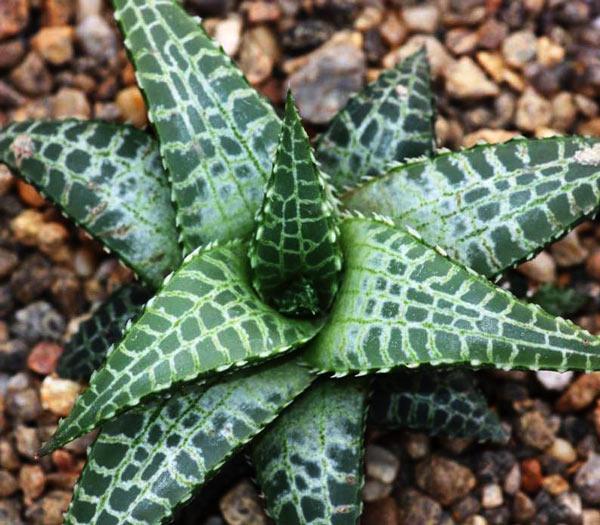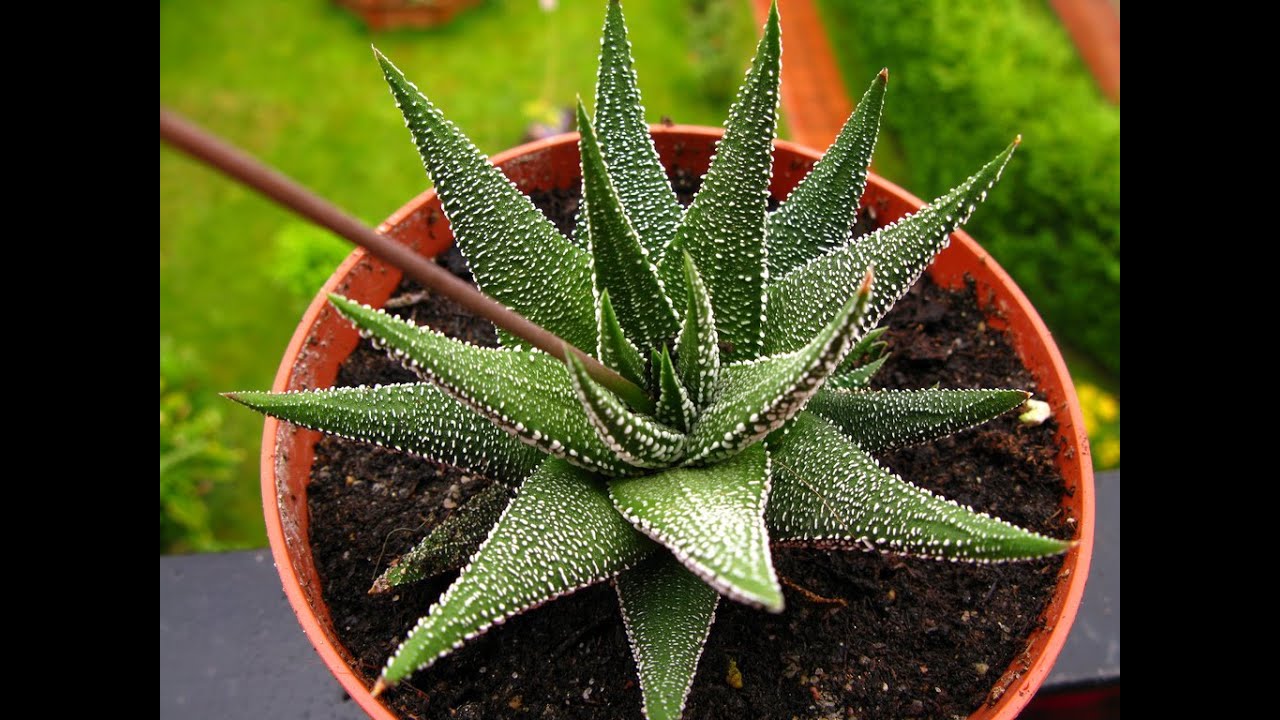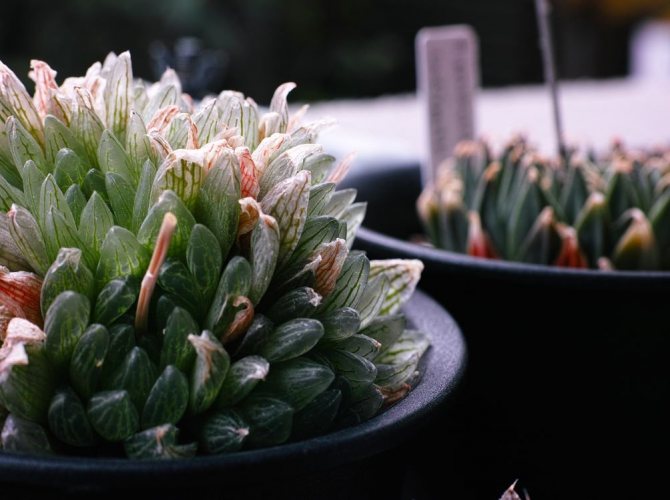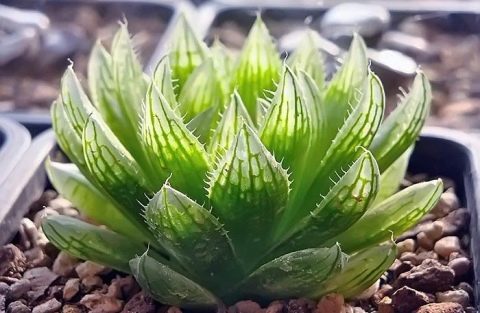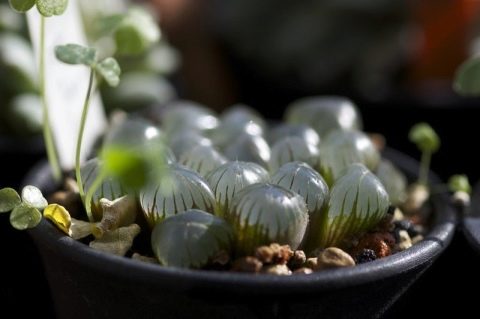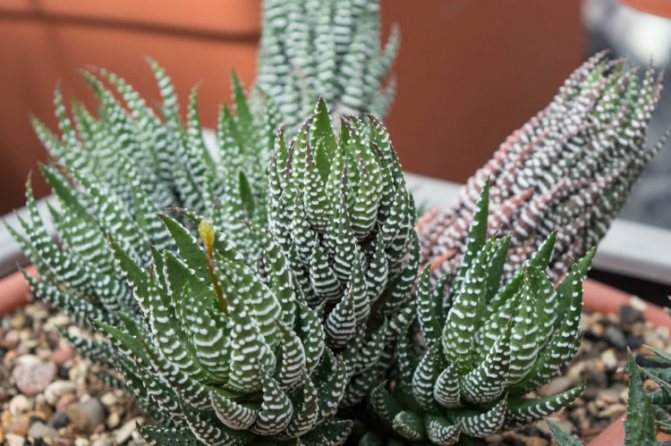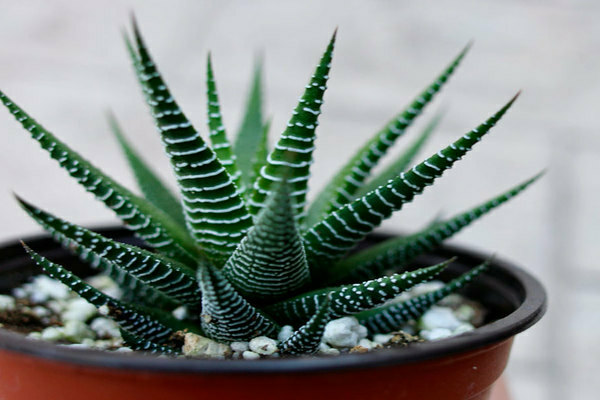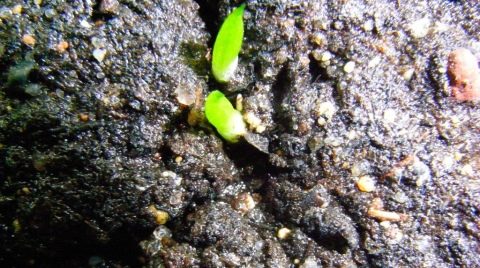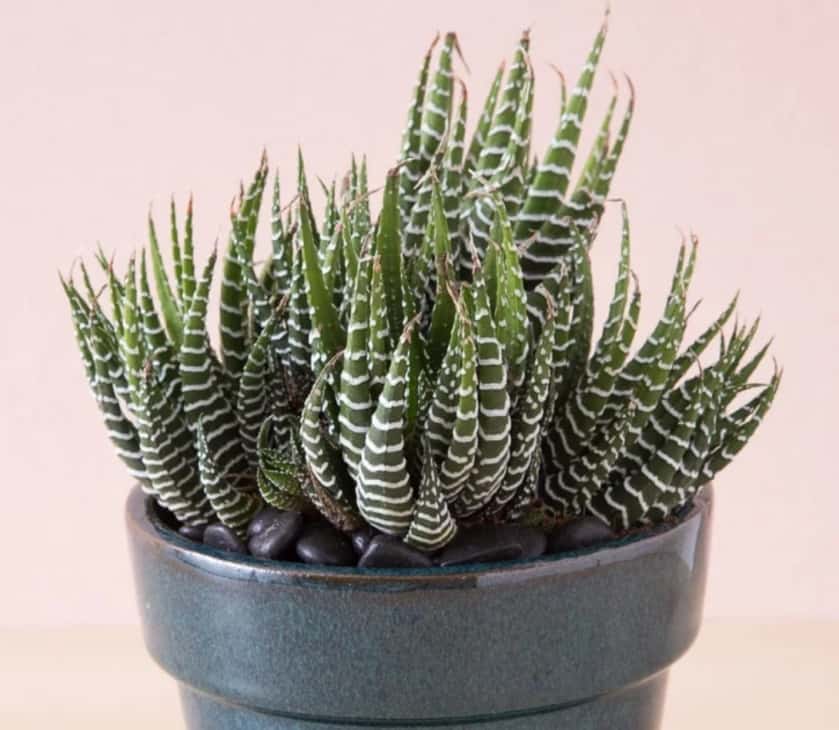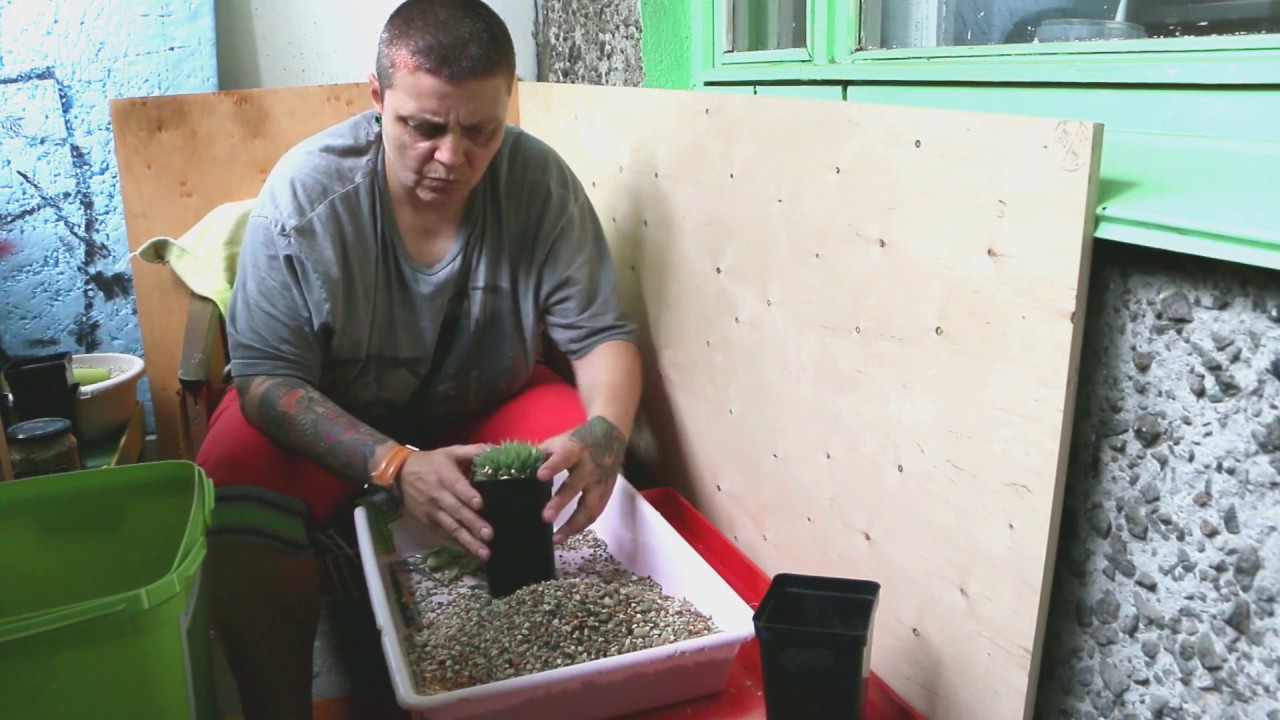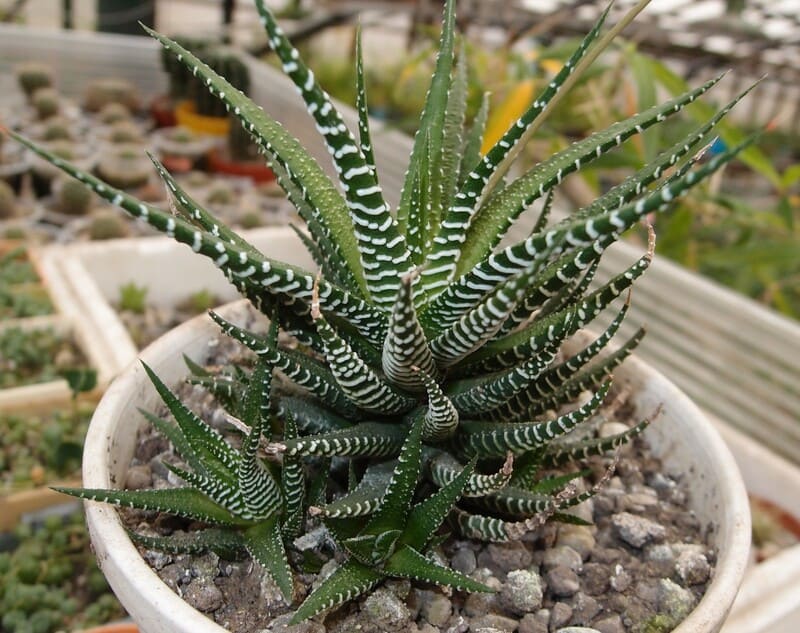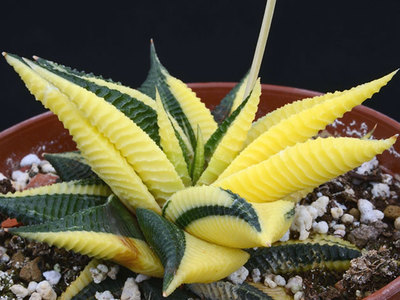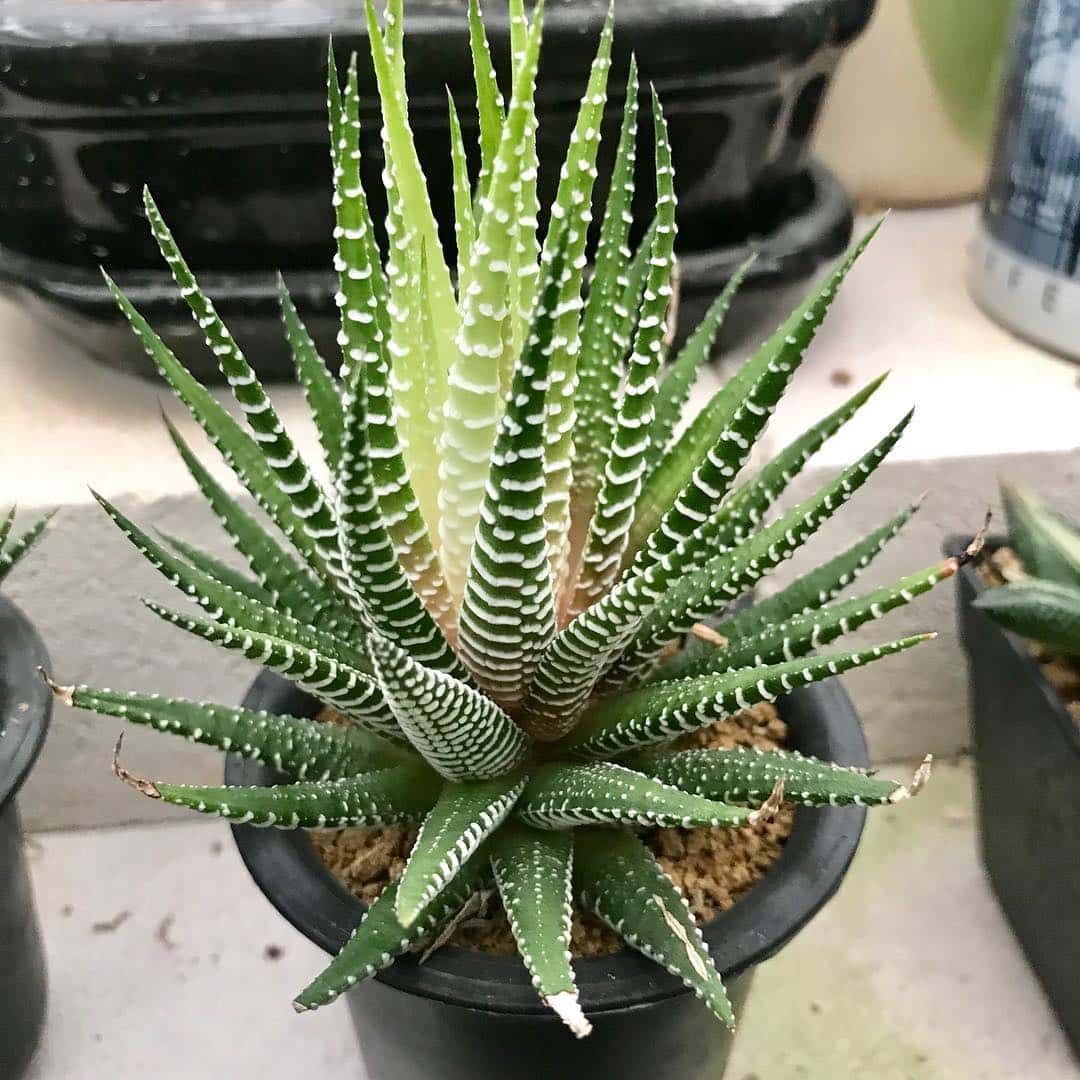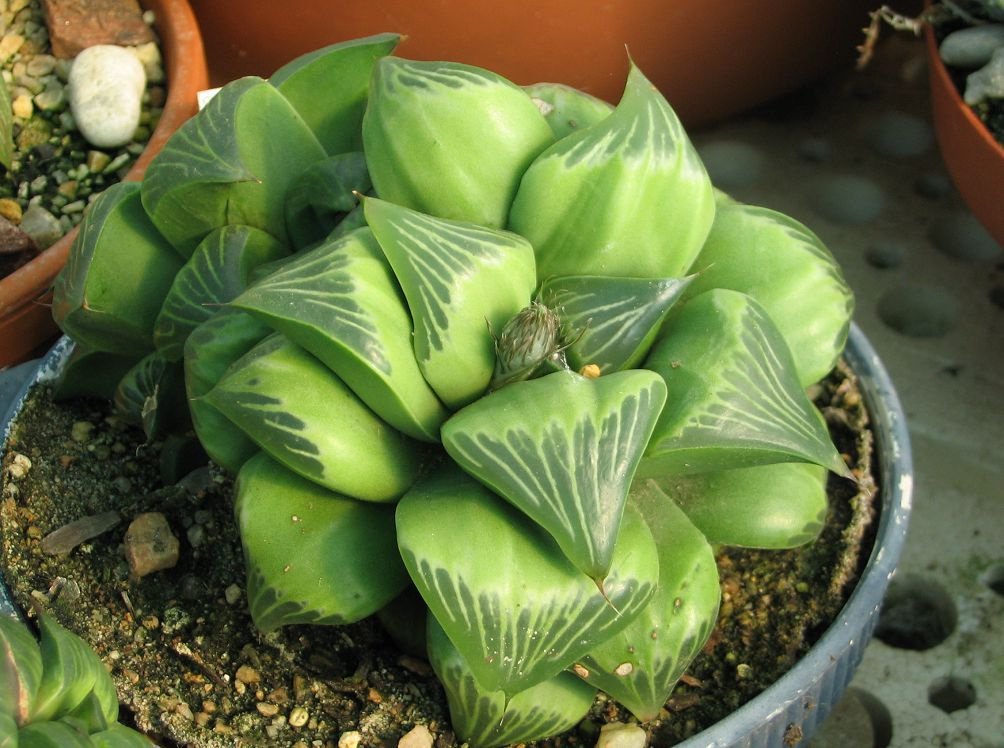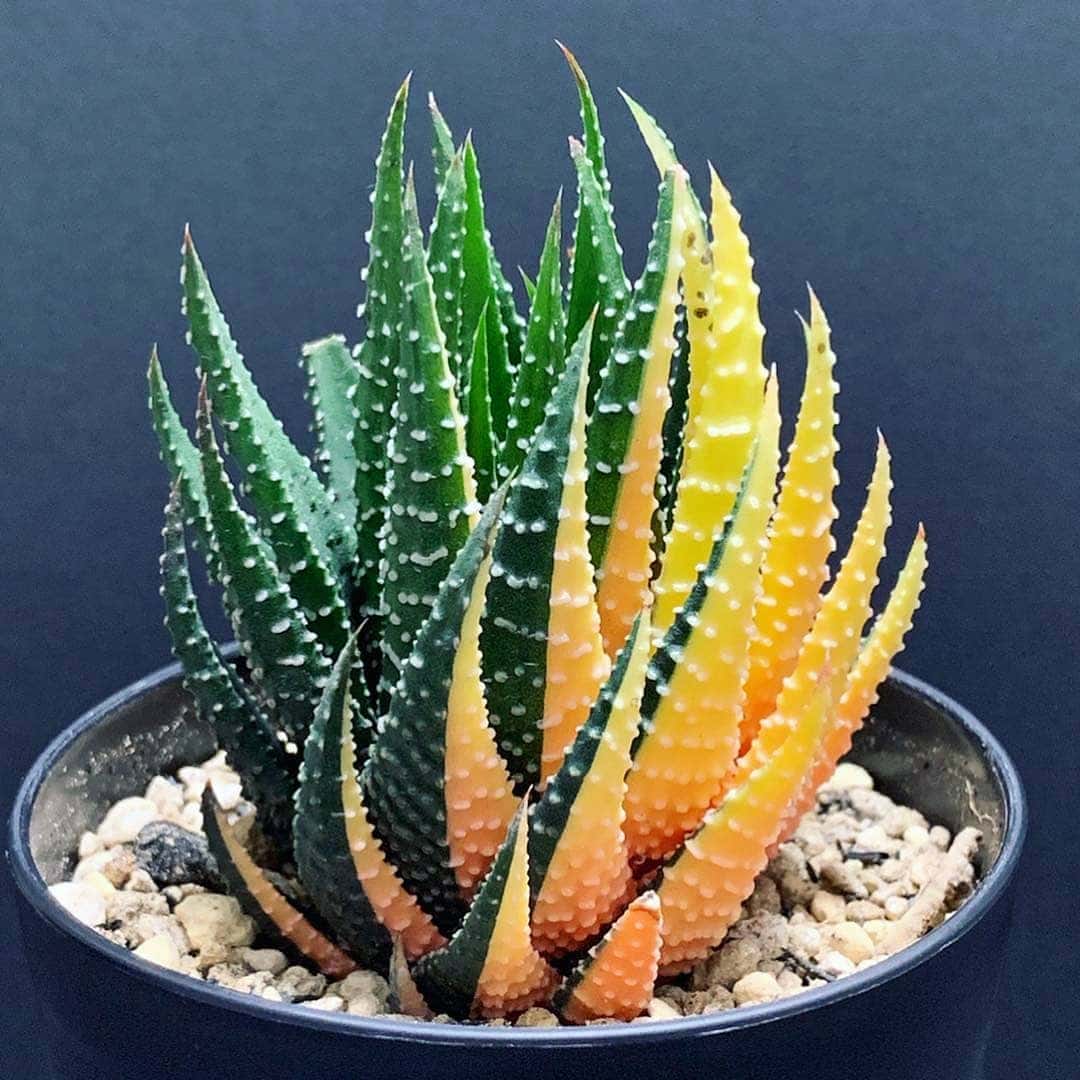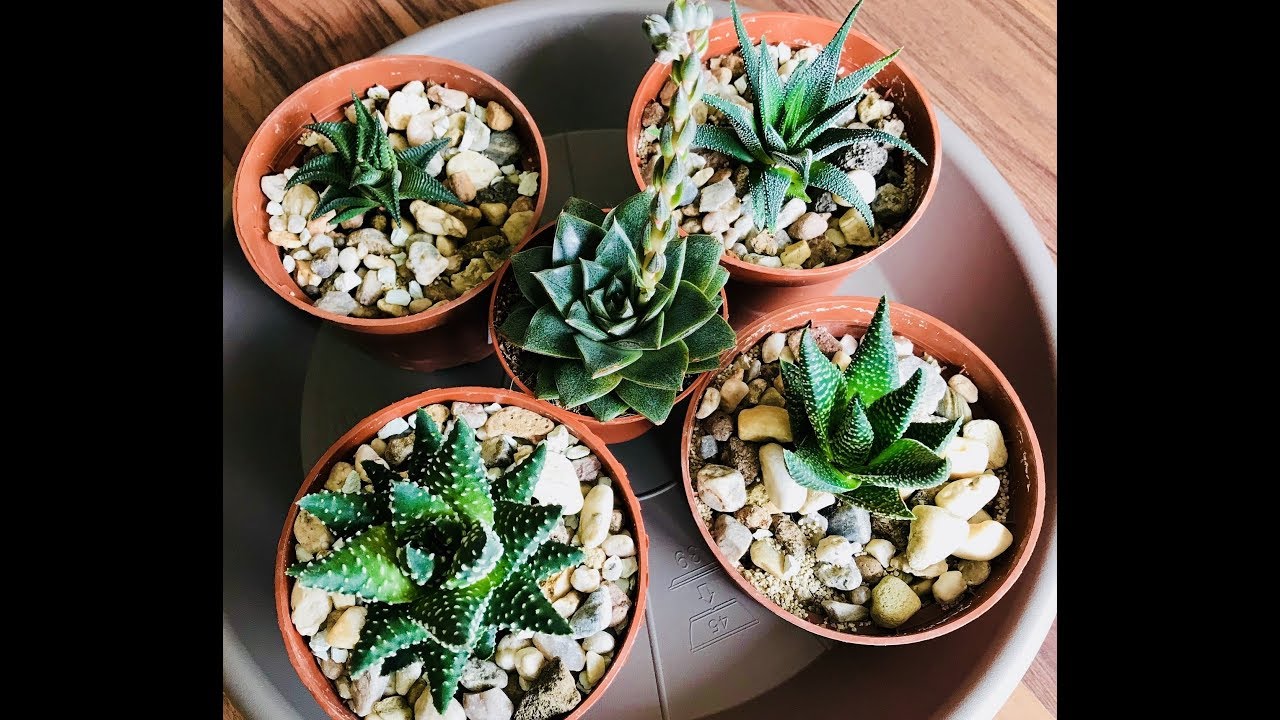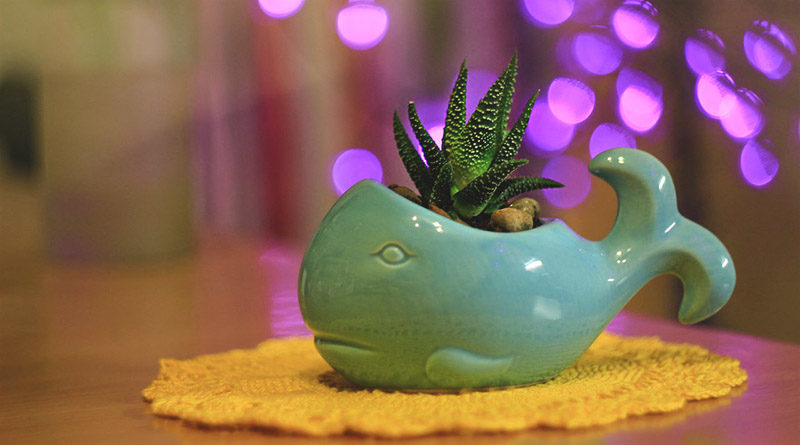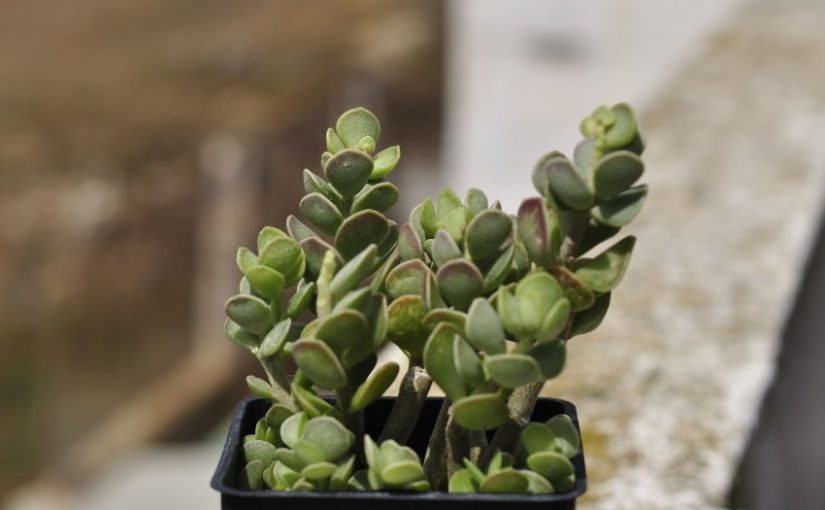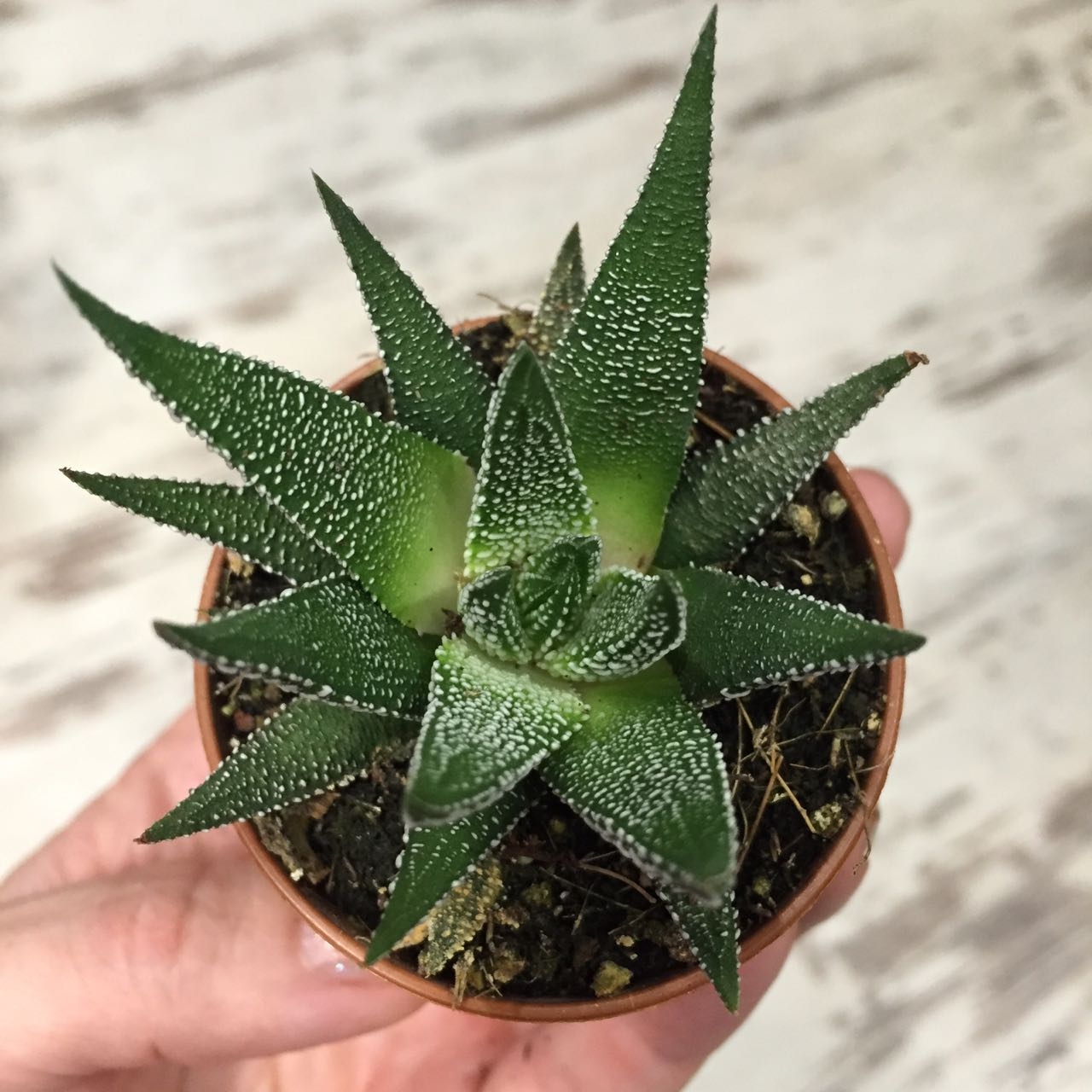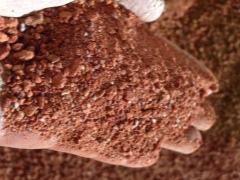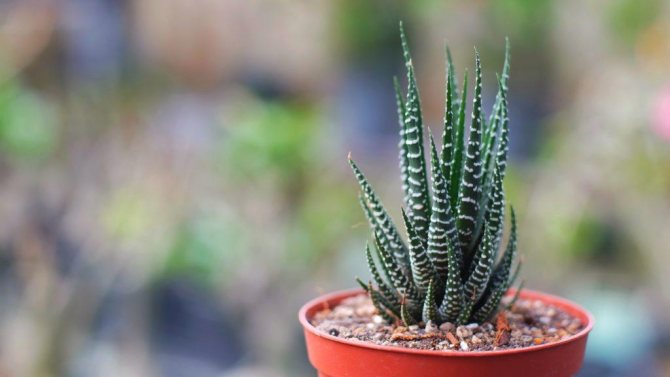Subtleties of care
The African origin of haworthia striped has determined the peculiarities of its cultivation in indoor conditions. It is very well adapted to survival in an arid climate, which is confirmed by the reviews of flower growers. There are cases when Haworthia, forgotten for several months, did not die and was completely restored after watering.
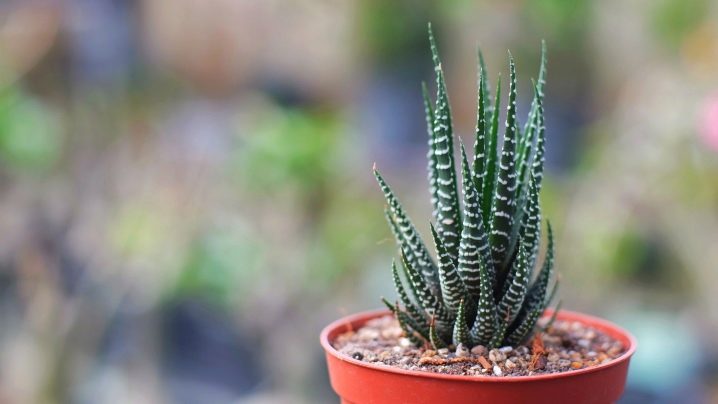
Light
Providing the Haworthia with sufficient lighting is important, but it does not like direct sunlight, as well as strong shading. The sill of the east or south-east window will be an ideal "residence"
Here the plant will receive just as much scattered light as it needs.

Air temperature
Probably the first association that comes to mind at the word "Africa" will be heat. But for haworthia striped, the temperature is not higher than + 20.25 ° C. And at higher rates, it is also worth ventilating. If possible, in the summer, it is better for the plant to stay in the fresh air, so it will definitely not overheat, but then you need to protect it from rain.
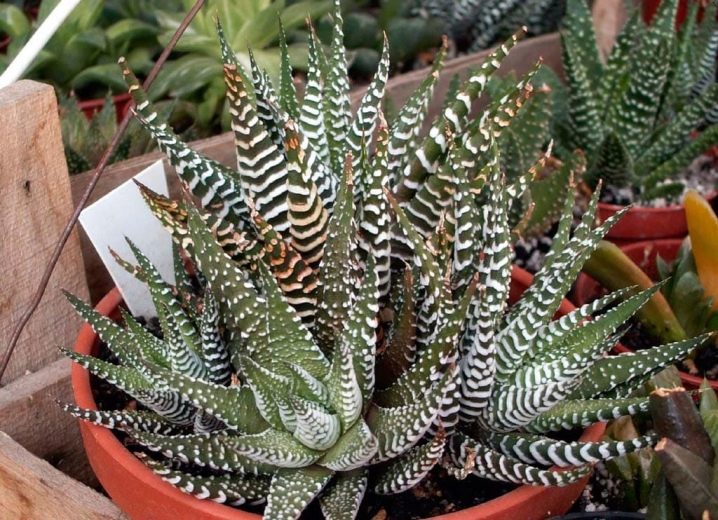
In winter, Haworthia has a dormant period, and during this season the indoor temperature should be reduced to + 10 ° C. Florists recommend placing small plants between frames. If the rosette of leaves is too large for such a space, the haworthia pot can be moved closer to the glass and protected from the effects of heating devices (for example, with a small sheet of plywood or a box).
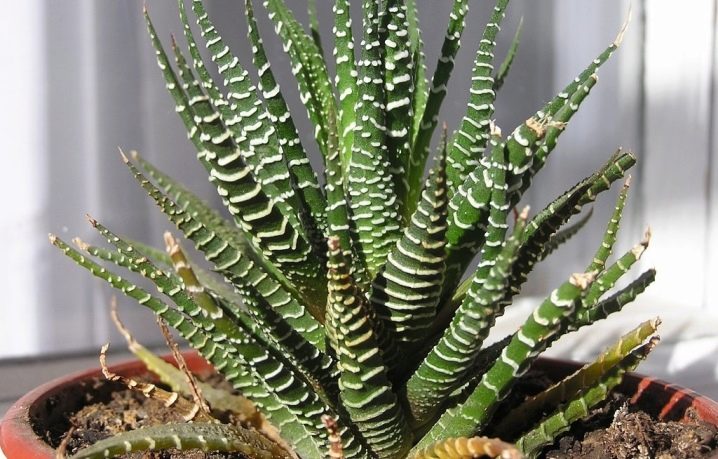
Humidity and watering
Watering succulents is needed, like all other plants, but excess moisture can lead to death. Watering is best with filtered or settled warm water. The frequency of this process depends on the environment. In a hot, dry room, you will have to water the plant more often.
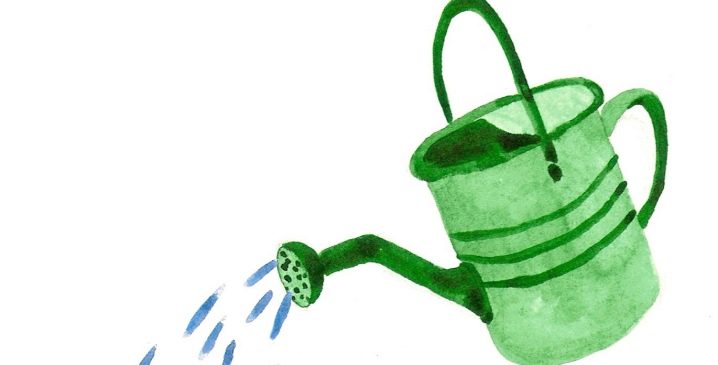
It is best to focus on the condition of the soil. When the top layer of the substrate dries well, then you need to water it. If you are not sure if the ground is dry enough, wait another day or two. Approximate watering schedule:
- in summer, autumn, spring - once every 3 days;
- in winter - 2 times a month.
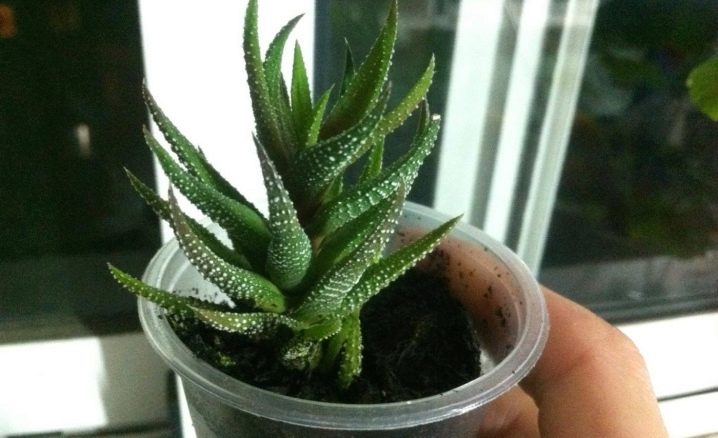
Although Haworthia does not like rain, it is sometimes necessary to remove dust from the leaf plates. Since the plant is small, you can simply wipe it all over with a damp cloth. On a hot summer day, a warm shower is permissible, but after it, it is better to blot the leaves with a napkin so that no water remains in the sinuses.

Top dressing
In nature, striped haworthia grows on rather poor soils, and at home it does not need to be fed intensively. But since the plant is rarely transplanted, the potted substrate is still depleted. Therefore, about 1 time per month in the spring-summer period, it is worth fertilizing the soil with a special top dressing for succulents and cacti. It is diluted according to the instructions on the package and applied simultaneously with watering (some growers recommend preparing a solution in half proportion).
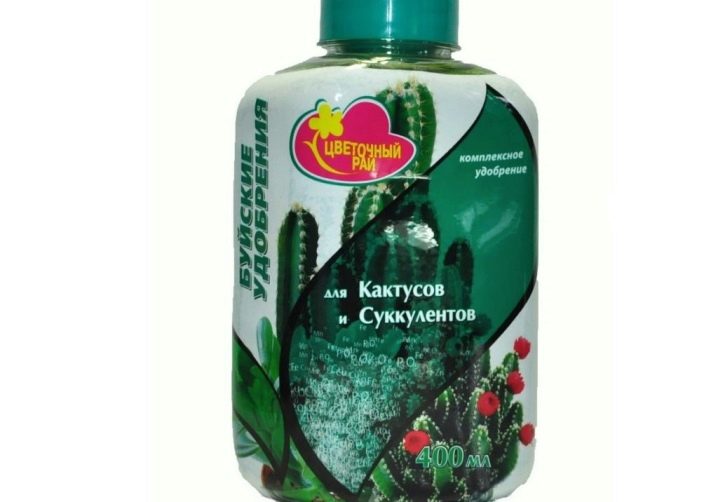
Home care for haworthia
Haworthia is a non-capricious plant that takes up little space, so almost everyone can grow it. Taking care of a flower means following basic care procedures.
Lighting
Haworthia grows and develops well under artificial light, has nothing against partial shade. But with natural light by the window, the plant can show all its beauty. But species with a variegated color (for example, striped haworthia) can lose their decorative effect if they are shaded.
On hot days, the bush can be removed from a sunny place and transferred to moderate shade. For this, open, cooler corners are also suitable - a balcony or a veranda. To ensure the supply of fresh air, the room with the Hawortia should be regularly ventilated.
Temperature
The plant has no special temperature requirements. In winter weather, Haworthia feels normal at room temperature, on summer days it can stand on an open balcony.
Watering mode
Watering the Hawortia is only worth well-settled water. In this case, the soil should only be slightly moistened: the plant does not need abundant watering. In summer, it is watered when the topsoil begins to dry out. In winter, the frequency of watering depends on the temperature in the room where the plant is kept. If it was moved to a cool place, watering is reduced to monthly. In a warm room, a one-time watering in 2 weeks will be enough. At the same time, water should not flow into the outlet: this often leads to the development of diseases. In addition, from waterlogging, Haworthia leaves can begin to wither and fall off.
If the plant lacks moisture, then the tips of the leaves begin to deteriorate, acquire a brown color, dry out and die.
Humidity level
Due to its fleshy leaves, Haworthia is insensitive to moisture levels, so the flower does not need to be sprayed.
Soil and pot selection
For planting, a rounded, wide, but not too deep container is selected. Excessive pot depth can lead to stagnation of liquid at the roots. It is also not recommended to choose a pot "in reserve" - a little tightness will have a positive effect on the appearance of the Haworthia. A sufficient drainage layer is certainly placed on the bottom of the pot. As a soil, you can use ready-made soils for cacti, adding a little clay there, as well as small pebbles or expanded clay. This will help drain off excess water.
The rosettes of the planted bush must be completely above the ground. But it is worth watching the exposure of the roots, pouring earth into the pot as necessary. If this is not done, the roots of the plant can dry out too quickly.
Top dressing
It is recommended to fertilize haworthia during the entire growing season, feeding is carried out about once a month. Complex formulations for cacti are suitable, but the indicated dosage should be halved. Top dressing is advised to be combined with watering so as not to overmoisten the soil. From autumn to mid-spring, you do not need to fertilize the plant. An excess of nitrogen for a plant is very harmful, in addition, excess nutrients can lead to a change in the color of the leaves.
Transfer
Due to the compact size of the bush, the haworthia transplant is not difficult. It is produced when the plant ceases to fit in an old pot. Haworthia leaves in this case begin to shrink. Younger, more actively growing specimens move annually. More adults are transplanted every 2-3 years. The bush removed from the pot is checked for signs of rot and dried or damaged roots are removed. All sections should be treated with an antiseptic.
Bloom
During flowering, a long peduncle with small nondescript flowers appears from the Haworthia rosette. Due to the fact that the flowers are not too decorative and take away a lot of energy from the plant, it is recommended to remove the peduncles immediately after they appear. This will allow the bush to not waste energy on the formation of buds. In addition, some species die immediately after flowering or ripening in case of pollination.
Landing rules
The procedure for breeding Haworthia at home is very simple. After the emergence of the root system, the plant must be planted in healthy soil so that the flower grows in complete coziness and comfort.
The same applies to transplanting a plant, since there are times when transplanting a flower is extremely important for its condition. The capacity for planting and transplanting should be slightly larger than the previous size
Unfortunately, many growers are transplanting into the same pot, simply by slightly updating the soil. This is not worth doing. When choosing a pot, it is better to give your preference to round shapes with a wide diameter and low walls.A huge volume of container for a flower is undesirable, since in it the haworthia will begin to give more energy to growing the root system, and not to the leaves. And the soil itself in a large pot can turn sour.
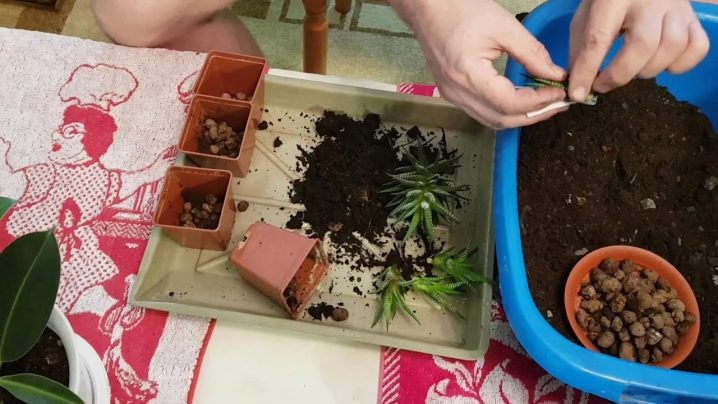
The new pot must have a drainage system. Haworthia is an unpretentious plant, therefore it does not need special mixtures. No wonder it grows in the wild in dry areas. As a planting soil, a mixture for succulents will be ideal. In such a soil, brick chips are present, which helps to regulate moisture. Although over time, this crumb will disintegrate and can harm the root. To avoid such incidents, it is best to prepare the soil yourself.

If Haworthia was purchased in a store, it must be transplanted into natural soil. The transport mix is not suitable for growing the plant. Moreover, in the process of transplanting it will be possible to get acquainted with its root system. The very process of planting or transplanting a Haworthia is quite simple. The main thing is to follow the sequence of actions and work correctly with a thin root system.
- The bottom of the new container must be filled with expanded clay, which provides high-quality drainage.
- A plant removed from an old pot must be carefully examined. If damaged or dry parts of the root system are found, they must be cut off before healthy tissue begins. The cut ends should be treated with a fungicide and left for one day.
- The plant must be lowered into the prepared container, gradually add the prepared soil, so that the earth is evenly distributed on the roots. You can't press down on the ground. The root system of Haworthia is delicate and can be damaged by physical exposure.
- The planting soil is collected in the form of a cone. This is necessary so that the liquid runs to the walls of the planting container, and not to the stem.
Experienced growers love to plant succulent mixes, consisting of different shapes and sizes of haworthia. The created composition will undoubtedly become a bright element of a blooming garden and even on a windowsill. To create such a masterpiece, you need to do a few simple steps.
- Pick up a new round vessel made of durable glass. Then rinse and disinfect it well. A napkin moistened with alcohol will do for disinfection.
- The prepared vessel must be filled with a drainage layer. In this case, you will need a lot of it.
- It is necessary to prepare the ground. You will need to combine garden and leafy soil, adding a little sand and activated carbon to it.
- Decor elements should be prepared. It can be small stones, shells, driftwood. Colored sand is desirable.
- It is necessary to carefully select the plants that will be located in the mix. Due to their color saturation, you can come up with an original composition.
- Remove old soil from the selected plants. Rooting of haworthia in the grooves of the florarium must be done extremely scrupulously, and only after that begin to lay out the decor.
- The composition will need to be poured a little from the watering can. The next watering of the mix is done only after a month.
- The florarium is located in a bright room with a constant supply of fresh air.

History and description of haworthia striped
Haworthia striped got its name in honor of the scientist Adrian Haworth, who studied the flora of Africa and was the first to introduce mankind to this unusual flower (Figure 1).
The homeland of the plant is South Africa, or rather, its driest regions. The root system of the culture is developed in such a way that Haworthia can receive the necessary amount of nutrients, even growing on poor rocky or sandy soil. Quite often, succulents are found under spreading trees and shrubs.
 Figure 1. The leaves of the plant have increased decorative effect
Figure 1. The leaves of the plant have increased decorative effect
The main feature of Haworthia is the presence of fleshy juicy leaves.They are ways of storing and retaining water, which enables the plant to survive in extremely arid climates. There are many types of culture, and they differ only in the shade of the leaves and the presence of lumpy growths of a pearl hue.
Another characteristic feature is the almost complete absence of a stem. In this case, the rosette of leaves can reach 10 cm in diameter. The main decorative value is represented by the striped leaves of the plant, although when comfortable conditions are created, haworthia can bloom. Unfortunately, its inflorescences do not represent decorative value and only weaken the culture, therefore the peduncles are recommended to be cut immediately after their formation.
The main types of grown houses description and photo
Haworthia striped (H. fasciata)
Quite a common look. This plant is preferred by both experienced gardeners and ordinary amateurs. Like all succulents, it is a perennial. It tends to grow without a trunk, the base consists of wide, thick leaves forming a large rosette. It should be noted that the appearance of the leaves is quite attractive. Usually, the leaf of haworthia is striped, saturated with white convex stripes located on the lower part of the leaf. The top of the leaf remains green and smooth to the touch. Haworthia striped does not require special care, but it is worth carefully wiping the sheets from dust accumulation. Also, this species should be hidden from direct sunlight and frequent watering should be avoided.
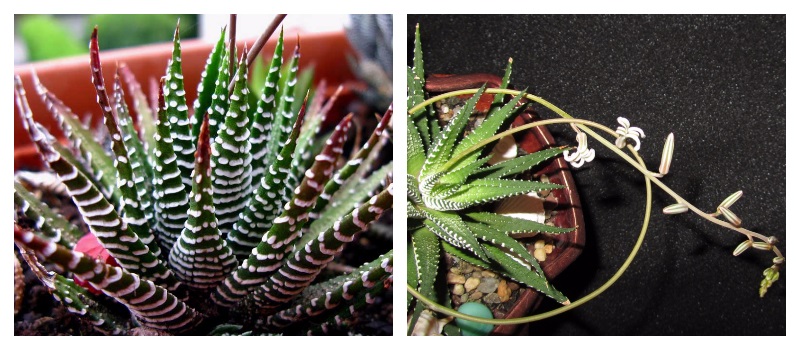 H. Striped
H. Striped
Haworthia pearl (H. margaritifera)
The leaves of this species are thick and fleshy, measuring about 7 cm in length and up to 25 cm in width. The appearance of Haworthia pearl is distinguished by a dark green color of leaves with clearly distinguished white growths, similar to small pearls. The inflorescences of the plant are small green flowers. Usually, flowering in this species occurs by ejection of a peduncle reaching 30 cm in length. Haworthia pearl is popular with color lovers, it serves as a wonderful decoration for any interior.
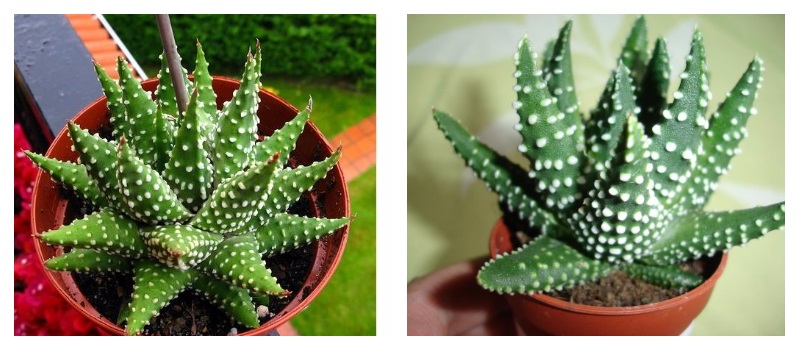 H. Pearl
H. Pearl
Haworthia scaphoid (H. cymbiformis)
Haworthia navicular takes its name from the shape and structure of the leaves. The plant looks like a flat rosette with a diameter of 8 to 10 centimeters. The leaves are gray-green, about 4 cm long and 1-1.2 cm wide. A distinctive feature of this species is its appearance. On the surface of the leaves, in the scaphoid haworthia, a transparent skin is observed, giving the plant a more unusual and spectacular appearance. Also, she has glossy sheets, on which it is almost impossible to find roughness or bumps.
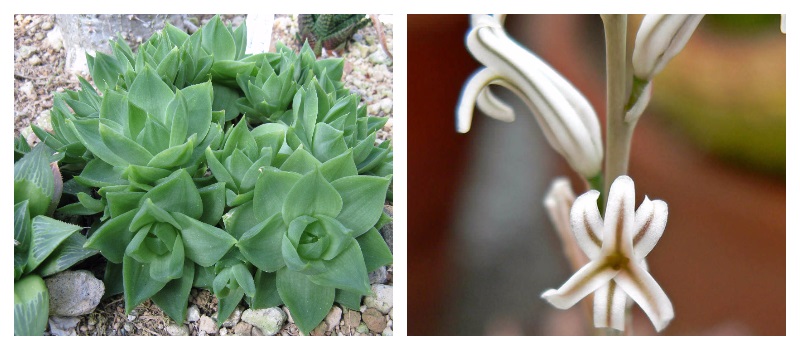 H. Scaphoid / Flowering
H. Scaphoid / Flowering
Haworthia Cooper (H. Cooperi)
Haworthia Cooper is a small bush of small rosettes of light, rounded leaves. The plant has unique villi located at the tip of the leaf. Haworthia Cooper is also distinguished by its extraordinary windows that serve for the penetration of light, and pierced with veins. It should be noted that this species needs long-term "sunbathing". Transplanting the outlet is not recommended, as the process of plant viability, which depends on ultraviolet rays, may be disrupted.
 H. Cooper
H. Cooper
Haworthia limolist (H. limifolia)
This succulent plant has pointed triangular leaves that form a rosette and grow in a spiral. A distinctive feature of some subspecies is vertical cross-yellow stripes on the leaves. The inflorescence is a bouquet of small white flowers.
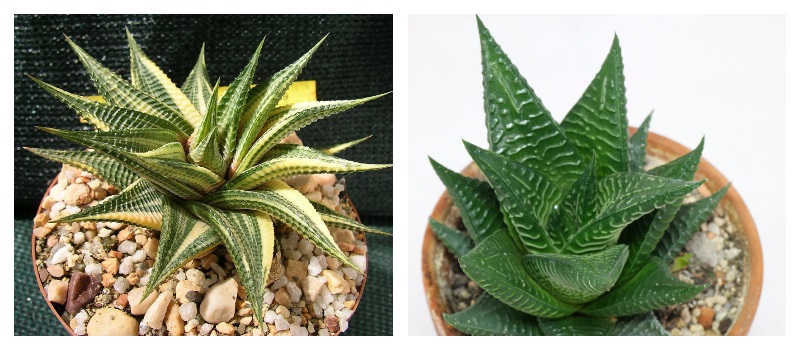 H. Limolistnaya
H. Limolistnaya
Haworthia blunted (H. retusa) - Retusa
Retusa is one of the common subspecies of haworthia. It has triangular leaves with a rigid base, about 3-5 centimeters in length. The leaves are bent back, pronounced light stripes with transparent windows are visible. The color range can be from green to red or red-brown.
It is worth noting that a special variety called "Giant" has also been bred, which is distinguished by its large leaf size, with many thin veins.
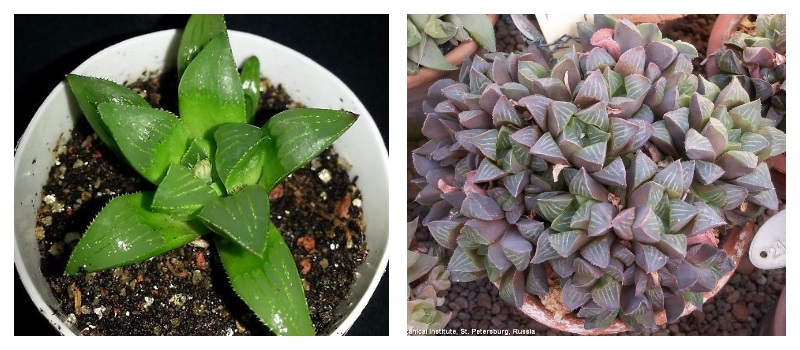 H. Dull
H. Dull
Haworthia truncata (H. truncata)
Haworthia trunkata is a miniature perennial that grows predominantly in dense groups that form characteristic outer rosettes. The plant is stemless, the rosette reaches a diameter of 70 millimeters. Trunkata, has leaves ranging in size from 25 mm in length and up to 8 mm in width. Leaves are blue-green in color with transparent veins, straight and shortened. The plant actively produces shoots that can reach up to 25 centimeters in length.
Structural features of hovartya trunkata:
• The plant is different in size;
• Differs in the shape of the outlet;
• A distinctive feature is also a wide sheet.
Haworthia trunkata is significantly different from other species. It grows rather slowly. However, it reproduces actively and is not whimsical to care for. The plant takes root well, but it should be borne in mind that in moisture-consuming soil, it can lose roots, therefore, a balanced soil is required for planting.
 H. Trunkata
H. Trunkata
Haworthia spiderweb (H. arachnoidea)
It differs from other species in the abundant presence of bristles located along the edges of the leaf. This is a herbaceous type of haworthia.
 H. Spiderweb
H. Spiderweb
Difficulties of growing
When growing haworthia, you can face a number of problems. All of them are associated with errors in agricultural technology.
- The plant is stretched. This happens when there is a lack of light. The problem is more common in species with dark leaves. The plant is restored by moving it closer to the light with simultaneous feeding.
- The leaves dry and curl into a spiral. The reason is a draft or low room temperature.
- Leaves turn yellowish or reddish. The result of over-feeding with fertilizers with a high phosphorus content.
- Leaves wrinkle, become covered with spots. Prolonged exposure to the sun has resulted in sunburn.
- The leaves become soft, lose their shape. The result of heavy, frequent watering. Watering is limited to at least 2 weeks.
- The leaves turn black and rot at the base. Waterlogged soil combined with low temperatures.
- The pattern fades, the flower stretches. The dormant temperature is above 15 ° C - the plant is hot.
Knowing the cause of the problem, it is easy to fix it by adjusting the care or conditions of detention.
Main varieties
The genus belongs to the Asphodelic family. Due to the ability to form hybrids both within the genus and with related species (gasteria, aloe). This is a fertile material for breeders.
Note! There are many hybrids and cultivars that differ in color, rosette size, and the number and shape of tubercles on the leaves. Common types in indoor floriculture:
Common types in indoor floriculture:
Striped (or Haworthia fasciata) is one of the most common indoor species. Haworthia fasciata has a dark, dense rosette, which is decorated with clear transverse white stripes. The leaves are pointed, slightly curved. Most of the white streaks are on the underside of the sheet. Caring for haworthia striped at home consists in moderate watering and timely transplantation.

Haworthia fasciata
The drawn haworthia has a rosette of elongated triangular leaves, which are covered with small white tubercles on both sides. Decorative outgrowths are arranged chaotically, sometimes merging into stripes.

Drawn Haworthia
Sticky is a tall hybrid reaching 20 cm in height. Small triangular leaves are concave and nested. They grow in three rows and form spectacular columns that resemble snake scales from a distance. Color adds decorativeness - in some varieties, a reddish or salmon shade is added to the main green.
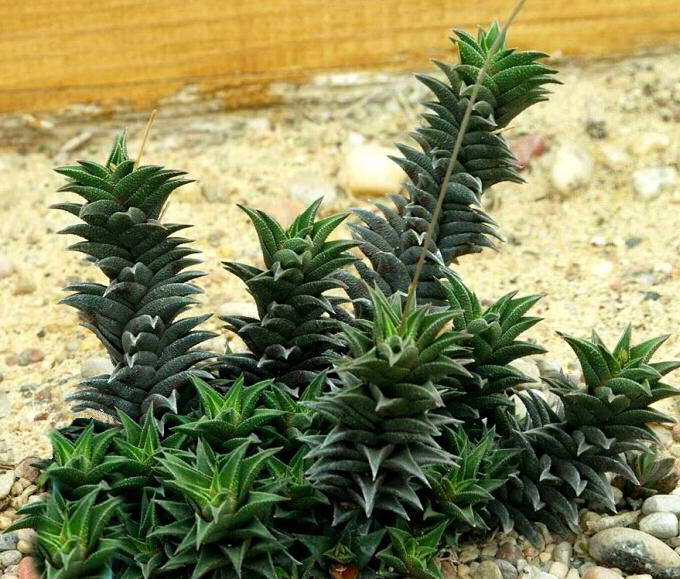
Haworthia sticky
Haworthia sinuous is distinguished by a small trunk and small triangular leaves, the lateral surfaces of which are bent upward. The species is covered with small white dots.

Haworthia meandering
Scaphoid forms compact rosettes of light green fleshy leaves with pointed ends. The broad, concave leaves resemble a boat. There are lighter, slightly translucent areas - leaf windows. Their purpose is to weaken the effect of the scorching sun. The view quickly gives out child outlets and fills up the free space;

Scaphoid Haworthia
Haworthia pearl is distinguished by large rosettes of dark green leaves, on which there are white round bulges resembling pearls. It blooms, like most succulents, with miniature bell-shaped flowers on long peduncles.

Pearl look
Reinwardt - forms a stem up to 20 cm high, on which short dark green leaves with a pointed top are densely planted, overlapping each other. They have decorative convex tubercles.
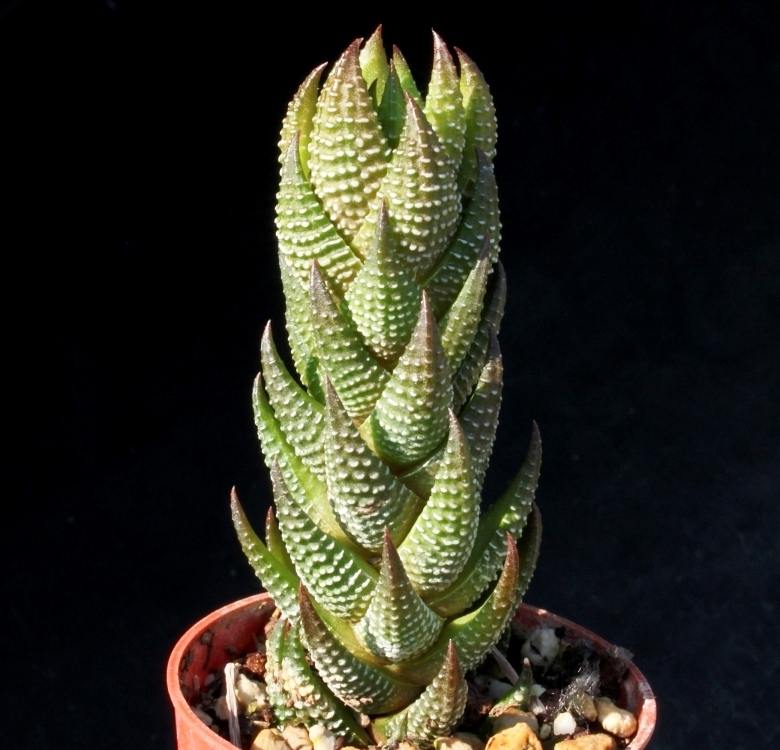
Haworthia reinwardtii
Blunted or Haworthia retuza - has a wide rosette of fleshy hard leaves with truncated tops. The color is from bright green to reddish, with a lack of lighting, the red tint intensifies. Lived on the leaves are visible.

Haworthia retusa
Chess (checkered) forms stemless rosettes with fleshy triangular leaves arranged in a spiral. On the upper part of the leaf plate there is a checkered pattern consisting of a grid of light and dark lines. The reverse side is covered with small tubercles. The edges of the leaves are sometimes decorated with denticles. Chess Haworthia is capable of forming shoots from underground stolons. In this species, a daughter rosette may appear at a distance of several centimeters from the mother plant.

Chess variety of Haworthia
Often in flower shops, the haworthia flower, the types of which are very diverse, are presented as "haworthia mix". At the same time, several varieties are planted in pots, which make up a spectacular composition.
Reproduction
There are several methods of growing and breeding Haworthia: children, leaves, seeds.
Daughter sockets
- During the spring transplant, remove the flower from the pot.
- Free the root system from the ground and carefully separate the young shoot with the root.
- Treat the separation site with foundation, if there is no such drug, you can use crushed activated carbon.
- Leave the plant to dry for a few hours.
- Prepare a small flowerpot, cover the bottom with drainage, a layer of soil and plant the flower.
- Compress the socket with earth. To avoid voids, lightly tap the sides of the pot.
- Drizzle with a small amount of settled or filtered water.
- Do not water a young plant until the soil is completely dry.

The daughter outlet can be detached without removing the mother bush. And how to separate the children from Haworthia?
- To do this, use a sharp knife. Pre-treat it with alcohol.
- Cut off the shoot and treat with a fungicide. Leave to dry for a day.
- Plant a socket in a pot. Moisten the soil around the edges of the pot.
- Do not allow water to enter the outlet.
- Resume normal watering after rooting after about three weeks.
- Install the flowerpot in a shaded place.
Sheet
- To propagate Haworthia with a leaf, you must separate the leaf near the base (you can use your hands or a sterilized knife).
- Leave it in the air for 2-3 days.
- For rooting, a wet loose substrate or sand is used.
- After planting, do not water for a month. During this period, roots will appear.
Seeds
For propagation of Haworthia by seeds, it is necessary to use freshly harvested planting material. Since over time, its germination decreases
If you buy in a flower center, pay attention to the collection time
Sow the seeds on the surface of wet sand, slightly pressing inward. Cover the container with glass or cling film, set in a bright place.Soil temperature 15-20 degrees C.
Havortia's planting material does not have a dormant period, so you can sow at any time. Spring planting is good because it does not require additional lighting.
If the seeds are sown in the fall, artificial lighting will be required after 7 days. Seedlings will appear in 1 month. After 6 months, a pick should be carried out.

Video: reproduction of Haworthia
Haworthia is a great gift for a novice grower, and she also has very little home care requirements. And most importantly, if you forgot to water, this is only for the benefit of the plant.
Where and how to plant?
Haworthia is an unpretentious plant and does not cause difficulties in breeding.
Main requirements:
- suitable substrate;
- lighting;
- watering.
Landing rules for haworthia trunkata:
The pot should not be deep, this leads to stagnation of water and death of the plant. The correct capacity is low and wide.
Place the succulent on the windowsill, shelves, in pots, wall holders
It is important that direct sunlight does not fall on the plant in hot weather.
In winter, Haworthia provide a dormant period with a temperature of 10-12 ° C and minimal moisture - no more than once a month.
In the period from April to August, four additional dressings are carried out with special fertilizers for cacti.
The room with the Hawortia is regularly ventilated. But at the same time, drafts are not allowed on the plant.
Lighting and location
Succulent grows well anywhere in the house, with the exception of north-facing windows. In the spring and summer months, the flower needs shading, because direct sunlight is harmful to it.
In winter, Haworthia provide a dormant period with low temperatures. With the onset of November, a pot with a plant is placed on a terrace, glazed loggia or balcony. In early March, the succulent is returned to its permanent place.
Soil requirements
Haworthia trunkata is a plant that is undemanding to soil. It develops in the same way:
- in the soil for cacti and garden turf;
- in sand mixtures and pebbles.
The succulent is provided with drainage, since when the water stagnates, the roots are prone to rotting:
- For aeration and removal of excess moisture, several holes are made in the pot.
- Expanded clay or river sand is laid at the bottom with a layer of 4-5 cm.
- Next, the substrate is poured, and pebbles are poured over the soil.

